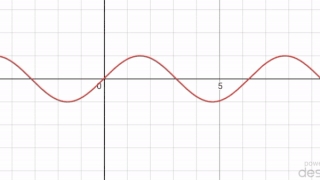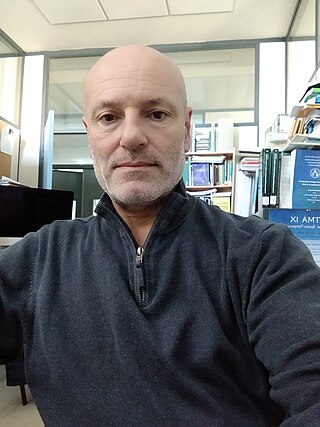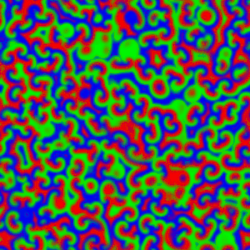In computer science, locality of reference, also known as the principle of locality, is the tendency of a processor to access the same set of memory locations repetitively over a short period of time. There are two basic types of reference locality – temporal and spatial locality. Temporal locality refers to the reuse of specific data and/or resources within a relatively small time duration. Spatial locality refers to the use of data elements within relatively close storage locations. Sequential locality, a special case of spatial locality, occurs when data elements are arranged and accessed linearly, such as traversing the elements in a one-dimensional array.
A coverage is the digital representation of some spatio-temporal phenomenon. ISO 19123 provides the definition:
Geographic profiling is a criminal investigative methodology that analyzes the locations of a connected series of crimes to determine the most probable area of offender residence. By incorporating both qualitative and quantitative methods, it assists in understanding spatial behaviour of an offender and focusing the investigation to a smaller area of the community. Typically used in cases of serial murder or rape, the technique helps police detectives prioritize information in large-scale major crime investigations that often involve hundreds or thousands of suspects and tips.
The receptive field, or sensory space, is a delimited medium where some physiological stimuli can evoke a sensory neuronal response in specific organisms.

Spatiotemporal gene expression is the activation of genes within specific tissues of an organism at specific times during development. Gene activation patterns vary widely in complexity. Some are straightforward and static, such as the pattern of tubulin, which is expressed in all cells at all times in life. Some, on the other hand, are extraordinarily intricate and difficult to predict and model, with expression fluctuating wildly from minute to minute or from cell to cell. Spatiotemporal variation plays a key role in generating the diversity of cell types found in developed organisms; since the identity of a cell is specified by the collection of genes actively expressed within that cell, if gene expression was uniform spatially and temporally, there could be at most one kind of cell.
In computer science and machine learning, cellular neural networks (CNN) or cellular nonlinear networks (CNN) are a parallel computing paradigm similar to neural networks, with the difference that communication is allowed between neighbouring units only. Typical applications include image processing, analyzing 3D surfaces, solving partial differential equations, reducing non-visual problems to geometric maps, modelling biological vision and other sensory-motor organs.

Neural oscillations, or brainwaves, are rhythmic or repetitive patterns of neural activity in the central nervous system. Neural tissue can generate oscillatory activity in many ways, driven either by mechanisms within individual neurons or by interactions between neurons. In individual neurons, oscillations can appear either as oscillations in membrane potential or as rhythmic patterns of action potentials, which then produce oscillatory activation of post-synaptic neurons. At the level of neural ensembles, synchronized activity of large numbers of neurons can give rise to macroscopic oscillations, which can be observed in an electroencephalogram. Oscillatory activity in groups of neurons generally arises from feedback connections between the neurons that result in the synchronization of their firing patterns. The interaction between neurons can give rise to oscillations at a different frequency than the firing frequency of individual neurons. A well-known example of macroscopic neural oscillations is alpha activity.
Sensory neuroscience is a subfield of neuroscience which explores the anatomy and physiology of neurons that are part of sensory systems such as vision, hearing, and olfaction. Neurons in sensory regions of the brain respond to stimuli by firing one or more nerve impulses following stimulus presentation. How is information about the outside world encoded by the rate, timing, and pattern of action potentials? This so-called neural code is currently poorly understood and sensory neuroscience plays an important role in the attempt to decipher it. Looking at early sensory processing is advantageous since brain regions that are "higher up" contain neurons which encode more abstract representations. However, the hope is that there are unifying principles which govern how the brain encodes and processes information. Studying sensory systems is an important stepping stone in our understanding of brain function in general.
A spatiotemporal database is a database that manages both space and time information. Common examples include:
In automata theory, continuous spatial automata, unlike cellular automata, have a continuum of locations, while the state of a location still is any of a finite number of real numbers. Time can also be continuous, and in this case the state evolves according to differential equations.
The Classification System for Serial Criminal Patterns (CSSCP) is an artificial intelligence computer system that assists law enforcement officials in identifying links between serial crimes. Working in conjunction with a neural network called a Kohonen network, CSSCP finds patterns in law enforcement databases by analyzing the characteristics of an offender, the criminal activities that have occurred, and the objects used in a crime. Once the links between crimes have been identified by CSSCP, law enforcement officials can then use the data that is produced to build leads or solve criminal cases. Through its capability to run autonomously, the CSSCP has proven that it can operate non-stop without any human interaction and can achieve results with much more accuracy and efficiency than a human.
Retinal waves are spontaneous bursts of action potentials that propagate in a wave-like fashion across the developing retina. These waves occur before rod and cone maturation and before vision can occur. The signals from retinal waves drive the activity in the dorsal lateral geniculate nucleus (dLGN) and the primary visual cortex. The waves are thought to propagate across neighboring cells in random directions determined by periods of refractoriness that follow the initial depolarization. Retinal waves are thought to have properties that define early connectivity of circuits and synapses between cells in the retina. There is still much debate about the exact role of retinal waves. Some contend that the waves are instructional in the formation of retinogeniculate pathways, while others argue that the activity is necessary but not instructional in the formation of retinogeniculate pathways.
Crime displacement is the relocation of crime as a result of police crime-prevention efforts. Crime displacement has been linked to problem-oriented policing, but it may occur at other levels and for other reasons. Community-development efforts may be a reason why criminals move to other areas for their criminal activity. The idea behind displacement is that when motivated criminal offenders are deterred, they will commit crimes elsewhere. Geographic police initiatives include assigning police officers to specific districts so they become familiar with residents and their problems, creating a bond between law-enforcement agencies and the community. These initiatives complement crime displacement, and are a form of crime prevention. Experts in the area of crime displacement include Kate Bowers, Rob T. Guerette, and John E. Eck.
A Crime concentration is a spatial area to which high levels of crime incidents are attributed. A crime concentration can be the result of homogeneous or heterogeneous crime incidents. Hotspots are the result of various crimes occurring in relative proximity to each other within predefined human geopolitical or social boundaries. Crime concentrations are smaller units or set of crime targets within a hotspot. A single or a conjunction of crime concentrations within a study area can make up a crime hotspot.
Crime pattern theory is a way of explaining why people commit crimes in certain areas.

In mathematics, a periodic travelling wave is a periodic function of one-dimensional space that moves with constant speed. Consequently, it is a special type of spatiotemporal oscillation that is a periodic function of both space and time.
Dynamic functional connectivity (DFC) refers to the observed phenomenon that functional connectivity changes over a short time. Dynamic functional connectivity is a recent expansion on traditional functional connectivity analysis which typically assumes that functional networks are static in time. DFC is related to a variety of different neurological disorders, and has been suggested to be a more accurate representation of functional brain networks. The primary tool for analyzing DFC is fMRI, but DFC has also been observed with several other mediums. DFC is a recent development within the field of functional neuroimaging whose discovery was motivated by the observation of temporal variability in the rising field of steady state connectivity research.
Dynamic texture is the texture with motion which can be found in videos of sea-waves, fire, smoke, wavy trees, etc. Dynamic texture has a spatially repetitive pattern with time-varying visual pattern. Modeling and analyzing dynamic texture is a topic of images processing and pattern recognition in computer vision.
Spatial embedding is one of feature learning techniques used in spatial analysis where points, lines, polygons or other spatial data types. representing geographic locations are mapped to vectors of real numbers. Conceptually it involves a mathematical embedding from a space with many dimensions per geographic object to a continuous vector space with a much lower dimension.

Jorge Mateu is a Spanish mathematician, author, and academic. He is a professor of Statistics within the Department of Mathematics at University Jaume I of Castellon and Director of the Unit Eurocop for Data Science in criminal activities in the same department.




